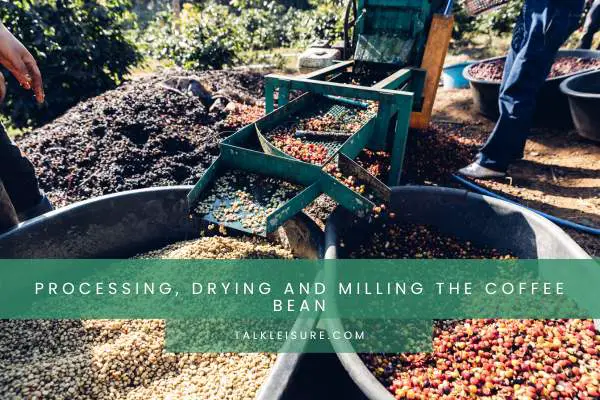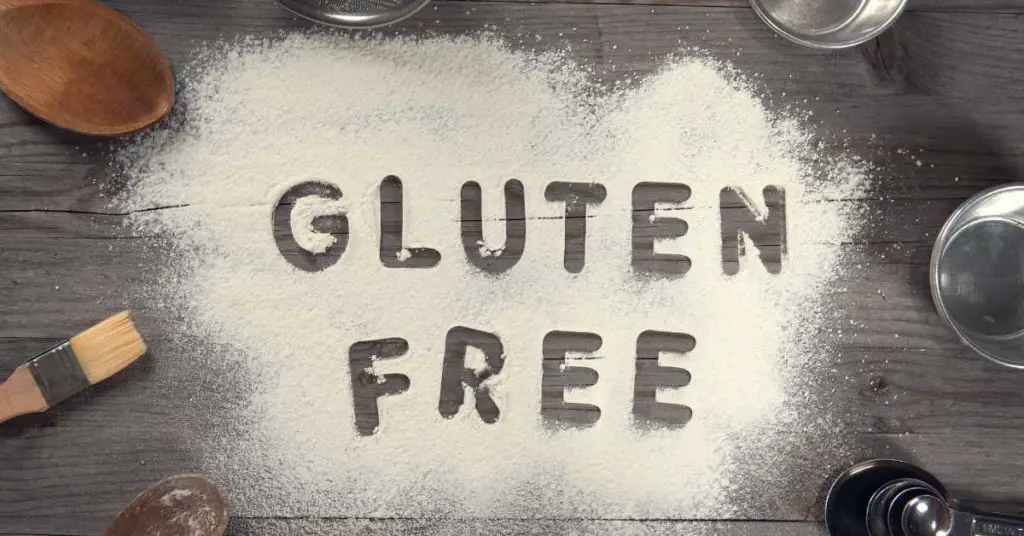Understanding the journey of a coffee bean is vital in the world of coffee production and appreciation.
It allows coffee enthusiasts and professionals to appreciate and evaluate the quality of coffee beans.
By tracing the journey from bean to cup, one gains a deeper understanding of the complexity and intricacies of coffee production.
Factors That Influence Coffee Bean Quality

Several factors contribute to the overall quality of coffee beans.
These factors can differ depending on the region, climate, and farming practices.
Here are some key factors that influence the quality of coffee beans:
- Variety: Different coffee varietals possess unique flavors, aromas, and characteristics.
These varieties include Arabica and Robusta, with Arabica being generally preferred for its superior quality and more nuanced flavors.
- Altitude: The altitude at which coffee is grown significantly impacts its flavor profile.
Higher altitudes often result in slower and denser bean development, leading to a more flavorful and complex cup of coffee.
- Processing Method: The method used to process coffee cherries after harvesting dramatically affects the final flavor of the beans.
Standard processing methods include washed, natural, and honey processed.
Each method imparts distinct flavors and characteristics to the coffee beans.
- Roasting: The roasting process plays a crucial role in unlocking the flavors and aromas of coffee beans.
The degree of roast can range from light to dark, with each level impacting the flavor profile.
Lighter roasts tend to highlight the unique characteristics of the coffee, while darker roasts produce bolder and more robust flavors.
- Storage and Freshness: Proper storage of coffee beans is essential to maintain their quality and freshness.
Air, heat, and light exposure can degrade the flavor and aroma.
It is recommended to store coffee beans in airtight containers away from direct sunlight.
By understanding these factors and their influence on coffee bean quality, coffee lovers can better appreciate the nuances of their favorite brew.
Whether it’s the altitude at which the beans were grown or the meticulous processing methods, each step in the journey of a coffee bean contributes to the overall coffee experience.
The Coffee Plant

The journey of a coffee bean starts with the coffee plant itself.
This incredible plant belongs to the genus Coffea and is native to tropical regions of Africa.
There are several species of the coffee plant, but the most commonly cultivated and consumed are Coffea arabica and Coffea robusta.
Coffee plants are small evergreen trees growing up to 30 feet tall.
They have dark green, glossy leaves and produce fragrant white flowers.
These flowers are short-lived, lasting only a few days, but they are crucial for the development of the coffee bean.
After pollinating the flowers, they give way to small green fruits known as coffee cherries.
These cherries start off green and gradually ripen to a bright red or yellow color, depending on the variety of coffee plants.
It takes several months for the cherries to fully ripen.
Harvesting The Coffee Bean
Harvesting the coffee bean is a vital step in the journey of a coffee bean, as it determines the quality and flavor of the final product.
The harvest timing is crucial, as underripe or overripe cherries can result in lower quality beans.
The coffee cherries are harvested by hand or using machinery, depending on the size of the plantation.
Hand-picking is often preferred for high-quality specialty coffee because it allows for selective harvesting.
Skilled workers carefully choose only the ripest cherries, ensuring the best beans are selected.
On the other hand, mechanical harvesting is more commonly used for large-scale commercial coffee production.
Mechanical harvesters can strip the cherries off the tree, but they lack the precision of hand-picking.
This method may result in a higher percentage of underripe or overripe cherries being harvested, which can affect the overall flavor of the beans.
Once the cherries are harvested, they are taken to processing stations to remove the outer layers and extract the coffee beans.
Before processing, the cherries are sorted to remove any damaged or unripe ones.
This ensures that only the highest quality cherries are used.
There are different methods of processing the coffee cherries, each with its influence on the flavor profile of the beans.
The washed or wet method involves removing the outer skin and pulp of the cherries using water and fermentation.
This method is known for producing clean and bright flavors.
The natural or dry method involves drying the whole cherries with intact skin under the sun or in mechanical dryers.
This method imparts fruity and intense flavors to the beans.
The honey or semi-washed method is a hybrid of the washed and natural methods, where some but not all of the mucilage is removed.
This method results in a sweet and complex cup of coffee.
After processing, the coffee beans must be dried to reduce their moisture content.
This is usually done by spreading them out on drying beds or using mechanical dryers.
Depending on the weather conditions, the drying process can take anywhere from a few days to a few weeks.
Processing, Drying And Milling The Coffee Bean

After the coffee cherries are carefully harvested, the next step in the journey of a coffee bean is processing, drying, and milling.
This stage is crucial as it affects the final coffee product’s flavor, aroma, and overall quality.
The first step in processing the coffee cherries is to remove the outer layers and extract the coffee beans.
Before this can be done, the cherries are sorted to ensure that only the highest quality ones are used.
Damaged or unripe cherries are removed from the batch.
There are different processing methods for coffee cherries, and each technique imparts a distinct flavor profile to the beans.
The most common methods are the washed or wet method, the natural or dry method, and the honey or semi-washed method.
In the washed method, the cherries undergo a series of steps involving water and fermentation to remove the outer skin and pulp.
This process produces clean and bright flavors in the beans.
On the other hand, the natural method involves drying the cherries with their skin intact under the sun or in mechanical dryers.
This method brings out fruity and intense flavors in the beans.
The honey method combines the wet and dry methods, where some but not all mucilage is removed.
This method results in a sweet and complex cup of coffee.
Once the cherries are processed, the coffee beans must be dried to reduce their moisture content.
This is usually done by spreading them out on drying beds or using mechanical dryers.
Depending on the weather conditions, the drying process can take anywhere from a few days to a few weeks.
It is essential to carefully control the drying process to prevent mold or other defects from developing.
After the beans are dried, they go through the milling process.
This involves removing the outer parchment layer from the bean and sorting the beans by size and density.
The milling process ensures that only the highest quality beans make it to the next stage of the journey.
Exporting Of The Coffee Bean
After the coffee beans have gone through the processing, drying, and milling stages, they are ready to embark on their journey to coffee lovers worldwide.
This is where the exporting phase comes in.
The exporting of coffee beans involves the careful handling and transportation of the beans from the country of origin to their final destination.
This is a critical stage, as any mishandling or damage to the beans can result in a loss of quality and flavor.
Once the beans have been milled and sorted, they are usually packed into large sacks for transportation.
These sacks protect the beans from moisture, insects, and other external factors that could spoil their quality.
To ensure the highest quality and freshness of the beans, monitoring and controlling the conditions during transportation is essential.
This includes maintaining the proper temperature and humidity levels, as well as avoiding exposure to sunlight and strong odors that could affect the flavor of the beans.
Most coffee-producing countries have established systems and regulations for exporting coffee beans.
This includes inspections by quality control agencies to ensure that the beans meet the required standards and certifications.
These certifications may consist of fair trade, organic, or specialty coffee designations, which can add value to the beans in the international market.
Once the beans have been cleared for export, they are shipped to their destination countries.
Depending on the distance and transportation method, this can take several weeks or even months.
During this time, it is crucial to monitor the beans to ensure they are not exposed to excessive moisture or temperature fluctuations that could lead to spoilage.
Upon arrival at their destination, the coffee beans may undergo further inspections and quality control measures before they are distributed to coffee roasters and retailers worldwide.
The beans are then roasted to bring out their unique flavors and aromas before they are finally brewed to delight coffee lovers everywhere.
Tasting And Cupping Of The Coffee Bean
Once the coffee beans have completed their journey from the farm to the exportation phase, they begin their next stage of evaluation: the tasting and cupping process.
This is an essential step in ensuring the quality and flavor of the coffee before it reaches the consumer’s cup.
Tasting and cupping are sensory evaluation techniques used by coffee professionals to assess the characteristics of coffee beans.
It involves carefully analyzing the brewed coffee’s aroma, taste, and overall profile.
The process begins by roasting a small batch of coffee beans.
Roasting is a critical factor as it greatly influences the taste and flavor of the coffee.
The roasted beans are then ground and brewed in a specific manner to extract the optimal flavors.
A typical cupping session involves trained professionals who evaluate multiple coffees side by side.
They use specialized tasting spoons to slurp the coffee, spreading it across the entire palate and capturing all the flavors.
As they sip the coffee, they pay attention to the acidity, body, aroma, and aftertaste.
Each aspect of the coffee’s flavor is carefully evaluated and scored during the cupping process.
The professionals look for specific characteristics such as acidity levels, sweetness, bitterness, and any unique flavors or complexities.
These evaluations form the basis for determining the overall quality and potential of the coffee.
Cupping is often conducted in a controlled environment with standardized protocols to ensure consistency and accuracy.
Different brewing methods, such as French press or pour-over, may be used to assess the coffee’s flavor under varying conditions.
Tasting and cupping are not only performed by coffee professionals but also by coffee buyers and roasters.
This allows them to make informed decisions about which beans to purchase and how to roast them to bring out their best qualities.
In addition to evaluating the characteristics of the coffee, cupping also serves as a quality control measure.
It helps identify any defects or inconsistencies in the beans that may impact the final product’s flavor.
This ensures that only the highest quality beans reach the consumer.
Roasting The Coffee Beans
After the tasting and cupping process, roasting is the next crucial step in the journey of a coffee bean.
Roasting is vital in developing the flavors and aromas we associate with coffee.
It is a skillful process that requires experience, precision, and an understanding of the characteristics of different coffee beans.
Roasting coffee beans involves applying heat to raw, green coffee beans, causing chemical reactions that transform their physical and chemical properties.
The beans go through various stages during the roasting process, each stage contributing to the final flavor profile.
One of the primary objectives of roasting is to achieve the desired level of roast.
Coffee can be roasted anywhere from light to dark, with each level of roast offering a different taste experience.
Lighter roasts tend to have more acidity and preserve the original flavors of the coffee beans, while darker roasts develop deeper flavors and may exhibit a smoky or bitter taste.
The roasting process also affects the aroma of the coffee.
As the beans heat up, they undergo pyrolysis, releasing volatile compounds that contribute to the enticing fragrance of freshly brewed coffee.
Roasting coffee beans is both an art and a science. It requires careful monitoring of temperature and time to ensure optimal results.
Experienced roasters rely on their senses, observing changes in color, listening for cracks (audible pops that occur during roasting), and using their noses to detect subtle changes in aroma.
Once the beans reach the desired roast level, they are rapidly cooled to prevent further roasting and preserve their flavors. This cooling process is essential in achieving consistency across batches and maintaining the quality of the coffee.
The final roasted coffee beans are ready to be ground and brewed, unlocking their full potential. The roasting process enhances the flavors and aromas that were initially present in the green coffee beans, creating a unique and enjoyable coffee experience for consumers.
Packing the Coffee Beans
Once the coffee beans have been roasted to perfection, the next step in their journey is packing.
Packing is a crucial process that ensures the freshness and quality of the coffee beans are preserved until they reach the hands of coffee enthusiasts.
The first consideration in packing coffee beans is the choice of packaging material.
The most common options include foil-lined bags, valve-sealed bags, and sealed cans.
These materials are chosen for their ability to protect the beans from moisture, light, and oxygen, which can all degrade the flavors and aromas of the coffee.
When packing the coffee beans, removing as much air as possible from the packaging is essential.
Air can lead to oxidation, which can cause the beans to become stale and lose their vibrant flavors.
One way to remove air is through the use of a one-way valve. This valve escapes carbon dioxide while preventing oxygen from entering the package.
Another important consideration when packing coffee beans is the size of the packaging.
Coffee beans are best stored in smaller quantities to prevent them from going stale.
This is because once the package is opened, the beans are exposed to air and will deteriorate.
Packing the beans in smaller quantities allows coffee lovers to enjoy the freshest coffee possible.
Additionally, labels and branding play a crucial role in the packaging of coffee beans.
Brands use packaging to showcase their identity and communicate their values to consumers.
Eye-catching labels and informative packaging can attract customers and differentiate a brand from its competitors.
Proper storage of packed coffee beans is also vital to maintain their quality.
It is recommended to store the beans in a cool, dry place away from direct sunlight.
This helps preserve the coffee beans’ flavors and aromas for a longer period.
Time To Brew Your Coffee!
After a coffee bean’s long and meticulous journey from farm to cup, it is finally time to brew your coffee and savor its rich flavors and aromas.
Brewing coffee is an art and a science, and various methods and techniques exist to achieve that perfect cup of joe.
Whether you prefer a classic drip coffee, a smooth pour-over, or a bold espresso shot, the brewing process is where the magic happens.
The first step in brewing your coffee is choosing the right beans. Coffee beans come in different varieties and roast levels, each offering its unique taste profile.
Whether you prefer a light roast with fruity notes or a dark roast with chocolatey undertones, selecting the beans that match your preferences is crucial.
Next, you’ll need to grind your coffee beans. Grinding the beans just before brewing allows you to extract maximum flavor from the coffee.
The grind size will vary depending on the brewing method you choose.
A medium grind is recommended for a drip coffee maker, while a fine grind is ideal for espresso.
Once your coffee beans are ground, it’s time to prepare the brewing equipment.
Whether it’s a French press, a pour-over cone, or an espresso machine, each brewing method requires specific equipment and techniques.
Follow the instructions provided with your chosen brewing equipment to ensure optimal results.
Now, it’s time to start the brewing process.
For drip coffee, simply add the ground coffee to the coffee maker’s filter, add water to the reservoir, and press the start button.
For pour-over, place the coffee filter in the cone and pour hot water slowly over the grounds in a circular motion.
For espresso, follow the steps outlined by your espresso machine, including tamping the coffee grounds and extracting the shot.
As the delicious aroma of freshly brewed coffee fills the air, it’s essential to take a moment to appreciate the coffee beans’ journey.
From the farms where they were meticulously grown and harvested to the roasting process that brought out their unique flavors, every step has contributed to the final product in your cup.
Finally, sit back, relax, and enjoy your freshly brewed coffee.
Take in the complex flavors, the bright acidity, the smooth body, and the lingering finish.
Each sip is a testament to the hard work and dedication that went into producing this beloved beverage.
More Articles: 12 Coffee Shops Around the World with Stunning Interiors






